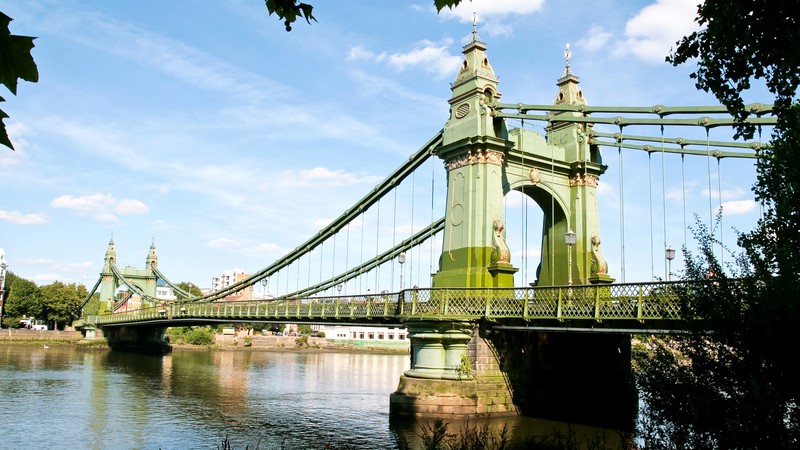
A £6m plan devised by Mott MacDonald to stabilise Hammersmith Bridge in London has been approved by Hammersmith & Fulham Council.
The 134-year-old cast iron structure has been closed to traffic amid concerns about its deterioration, although it opened temporarily to pedestrians and cyclists in July.
Mott MacDonald’s plan is an alternative to the original stabilisation scheme by Pell Frischmann and is expected to cost £24m less to implement. It can be completed in under a year.
Hammersmith & Fulham commissioned Dr Steve Denton, head of civil, bridge and ground engineering at consultant WSP, to compare the two options to stabilise the bridge’s cast iron pedestals.
Denton concluded that Mott MacDonald’s plan would be technically superior, implemented more rapidly and be more cost efficient than the £30m scheme presented by Pell Frischmann.
Mott MacDonald’s scheme involves the use of elastomeric bearings, which allow any pressure to be applied equally to all four corners while protecting the vulnerable cast iron structure.
The programme of works is expected to take 46 weeks and will avoid the need to divert the gas mains on the bridge during the stabilisation works, unlike the Pell Frischmann solution, which suggested driving piles through the fabric of the bridge.
Denton’s report said: “The design concept for the Pell Frischmann proposal is to construct an external frame that provides an independent load path, eliminating reliance on the pedestals until they are strengthened and new bearings are installed. Given the uncertainties about the pedestals at the time the concept was first developed, it is entirely understandable why such an approach was initially taken.”
He said the Mott MacDonald proposal benefits significantly from the insight gained from the refined pedestal analysis engineers have done over the past year. “As a result, jacking to enable bearing replacement is undertaken using the pedestal itself, with the robustness of the pedestal having been enhanced prior to jacking. The Mott MacDonald proposal is significantly more cost effective.”
And he added that “the Mott MacDonald proposal has lower impact on historic features” and has been favourably received by Heritage England.
Hammersmith & Fulham Council is now expected to fund the £6m package itself, in anticipation of the Department for Transport and Transport for London each contributing to a third of the cost at a later stage.
The council said it expected to keep the bridge open to pedestrians and cyclists for the “vast majority” of the duration of the works, but there may be short programmed periods of closure to allow some works to take place safely.
The pedestrian stabilisation plan is the first phase of works. The second phase will involve extensive strengthening and full restoration and will allow the bridge to reopen eventually to vehicles.
Denton is now considering the two current options for the strengthening and restoration work – the existing TfL plan and the pioneering Fosters + Partners/COWI proposal for a temporary double decker truss.











